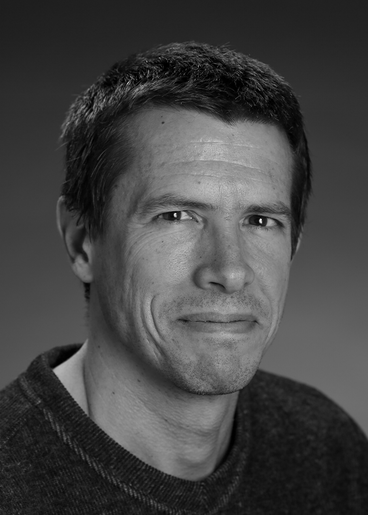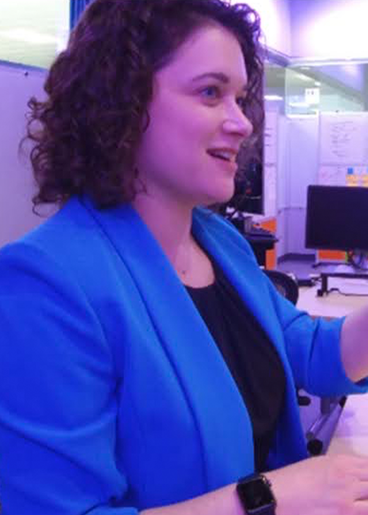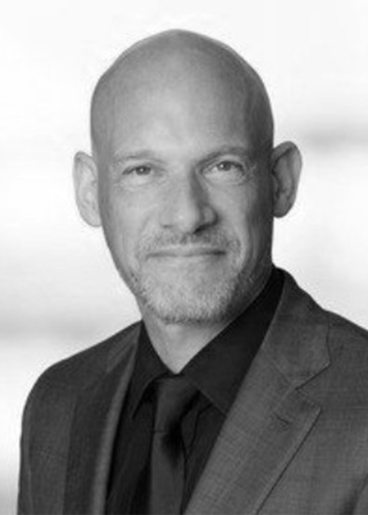Session Organizers: Marc Horner, Ansys and Kristian Debus, Virtonomy
Cardiovascular devices such as stents, transcatheter valves, flow diverters, and ventricular assist devices (VADs) are high-risk devices which require a significant level of investment to achieve market clearance. The industry has traditionally relied on bench testing, animal testing, and human trials for device development and review. But over the last several years, there has been a shift to incorporating computational modeling and simulation (CM&S) at various phases of the total product lifecycle to accelerate device development while also mitigating risk. CM&S accomplishes these goals by providing a virtual platform for guiding the development and execution of bench tests, identifying and assessing design interdependencies, reducing and refining clinical trials, and supporting the regulatory approval process. This session will review the application of computational modeling across multiple devices and at different points along the total product lifecycle.
An Overview of FDA Guidance Assessing the Credibility of Computational Modeling and Simulation in Medical Device Submissions
The medical device industry is increasingly using computational modeling and simulation (CM&S) for device development and premarket evaluation. When relying on CM&S to inform decision making that has the potential to cause patient harm, it is important to establish the credibility of the CM&S evidence. The FDA guidance “Assessing the Credibility of Computational Modeling and Simulation in Medical Device Submissions” provides a framework for establishing CM&S credibility in medical device regulatory submissions. The guidance builds upon the ASME V&V 40-2018 standard, but provides a more general credibility assessment framework applicable to a broad range of uses of CM&S (e.g., in silico device testing, CM&S used within medical device software, in silico clinical trials, CM&S-based qualified tools). In this talk, I will provide an overview of the guidance, discussing the credibility assessment framework, the different categories of model credibility evidence, and recommendations for reporting CM&S evidence in medical device submissions. Attendees will gain valuable insights into using this new FDA guidance for CM&S of medical devices.

Brent Craven
US. Food & Drug Administration
Brent Craven is the Senior Science Advisor of Computer Modeling & Simulation in the FDA's Center for Devices and Radiological Health's (CDRH) Office of Science and Engineering Laboratories (OSEL). He received his PhD in Mechanical Engineering from the Pennsylvania State University in 2008. His areas of technical expertise include computational fluid dynamics, fluid-structure interaction, multiphysics modeling, patient-specific modeling, in silico clinical trials, and verification, validation, and uncertainty quantification (VVUQ) methods applied to medical devices. His research and policy efforts at the FDA primarily focus on advancing computer modeling and VVUQ methods for medical devices. In addition, he regularly serves as a subject matter expert on medical device regulatory submissions. He has authored over 55 refereed journal articles and more than 100 conference proceedings and abstracts. He is currently an Associate Editor for the Journal of Verification, Validation and Uncertainty Quantification and Frontiers in Physiology. He has received a number of awards for his research and regulatory contributions, including the 2022 FDA Scientific Achievement Award for Excellence in Data and Computational Science, the 2018 FDA CDRH Excellence in Scientific Research Award, and an FDA Commissioner’s Special Citation Award in 2021 for his regulatory contributions in the review of emergency use ventilators.
Enhancing Catheter Deployment Strategies Through In Silico Simulations: A Transfemoral Catheter Pathway Case Study
We will discuss the pivotal role of in silico technologies in the regulatory approval process for medical devices, emphasizing the shift towards computational modeling and simulation to streamline safety and effectiveness evaluations. We will outline the acceptance of in silico evidence by regulatory authorities globally and showcases today's capability in generating digital evidence through virtual patient cohorts, advanced anatomical simulations, and regulatory reporting.
The presentation delves into a case study focused on catheter design and catheter pathways, showcasing how virtual simulations can dramatically enhance the design and deployment process. This involves a comprehensive analysis of the catheter's interaction with the vascular system, including the assessment of insertion forces, material stiffness, and anatomical variability. By simulating the catheter deployment across a diverse virtual patient population, we are able to identify optimal design parameters that can accommodate a wide range of anatomical structures, thereby minimizing the risk of complications and improving the overall success rate of catheter-based interventions.
Furthermore, this approach not only accelerates the development cycle by allowing for rapid iteration of design concepts but also significantly reduces the reliance on costly and ethically challenging animal and clinical trials. The integration of virtual patient data and simulation outputs into the regulatory submission process exemplifies a forward-thinking strategy to meet the stringent safety and efficacy standards set forth by global health authorities.

Simon Sonntag
Virtonomy
Dr. Simon Sonntag holds a doctorate in medical engineering and has over 10 years of experience in the field of cardiovascular medical device development and approval with a special focus on using computational modeling and simulation. He is a board member of various societies and associations, including the European Society of Artificial Organs, American Society for Artificial Internal Organs and the Avicenna Alliance. In 2019, he co founded Virtonomy as CEO with the mission to accelerate medical device development and clinical trials with digital patient twins and simulation. Virtonomy has created v-Patients, enabling medical device developers to perform development and testing in a virtual environment, thereby accelerating development, reducing risks, expenses, and regulatory burden significantly. This end-to-end solution is based on an ever-expanding database of real clinical data to reflect anatomical variability, demographic diversity and pathological conditions.
Multi-physics heart modelling: exploiting computational power to deliver better therapies, faster
This presentation focus on Medtronic efforts to create and leverage a three-physics model of the human heart and how these type of models can be leveraged to improve the therapy design. We make the case on how numerical modeling is disrupting the medical device industry the same way it happened thirty years ago with the automotive and aerospace industry. We will discuss short and long term goals, as well as current industry needs. Finally we will showcase publicly know Medtronic successes on modelling and simulation.

Alfonso Santiago
Medtronic
Alfonso Santiago, is a Scientist working in Medtronic's Corporate Technologies and Innovation. He holds a PhD on computational biomechanics by the Barcelona Supercomputing Center. From his position in Medtronic he is responsible of scouting and executing solutions for Medtronic's long-term scientific challenges leveraging physics- and data- based models. Today he will show the latest Medtronic advances on computational models of the heart.
A Practical Model of Balloon/Tissue Contact in Pulmonary Vein Isolation with Cryoballoon Ablation
Effective treatment of paroxysmal atrial fibrillation with pulmonary vein isolation via cryoballoon ablation is dependent on effective contact with the targeted tissue surface. This paper presents a computational method for determining contact area between the inflated cryoballoon and a given left atrial and pulmonary vein anatomy (including the pulmonary veins which return blood to the left atrium), developed to evaluate the potential benefit of multiple balloon sizes in any left atrial anatomical shape acquired by medical imaging. The method uses aspects of lumped mechanical element modeling methods to gain computational efficiency. A sensitivity study shows the model has robustness to model material parameters and appropriate sensitivity to contact force. Application to post-procedural analysis and potential for near-real-time procedure planning are discussed.

Dave Smith
Boston Scientific
Dave is a Research and Development Fellow at Boston Scientific. He received his PhD degree in Mechanical Engineering from the University of Minnesota, then spent 25 years in various roles in product and process development for implantable pacemakers and defibrillators, implantable cardiac leads, and cryoablation therapy devices at Guidant and Boston Scientific, as well as participated in standards development as part of the AAMI Cardiac Rhythm Management Device Committee Working Group 01.
Patient specific inputs for cardiovascular CM&S digital twins

Dawn Bardot, PhD
General Manager, Global Service and Cloud Product, Abiomed
Dawn Bardot is GM, Global Service and Cloud Product at Abiomed encompassing global field service and sales, remote monitoring platform Impella Connect, Abiomed’s AI Software-as-a-Medical Device portfolio, and the product cybersecurity function. Prior to Abiomed, Dawn was Director of Healthcare Innovation at Medtronic where she led an award winning Healthcare Innovation Team. She has 15+ years of experience in medical device leadership spanning startups, academia, large companies and non-profit organizations. Her previous roles included Vice President of Technology Innovation at the Medical Device Innovation Consortium, a public private partnership with FDA, patient groups, and medical device industry. There, she created high-impact volunteer teams that produced a statistical framework for incorporating virtual patients in clinical trials, increased the acceptance of computer modeling as regulatory evidence, and demonstrated digital data capture with a patient partnership. In 2016 she led the grant and launch of the FDA designated National Evaluation System for health Technology (NEST) coordinating center which is enabling the future of real-world evidence. Dawn’s prior roles were at startup organizations including SaMD SaaS company HeartFlow, several High Intensity Focused Ultrasound (HIFU) companies and faculty at the University of Alabama, Huntsville. Dawn received a BS and MS in mechanical engineering from Kansas State University, a PhD in mechanical engineering from the University of Washington, was a postdoctoral Medical Device Innovation Fellow at the University of Minnesota Medical Devices Center, was a Faculty Fellow at NASA Marshal Space Flight Center, and is an Industry Fellow at the University of Minnesota Institute for Engineering in Medicine.
Session Organizer Bios

Kristian Debus
Virtonomy
Dr. Kristian Debus holds a doctorate in mechanical engineering with a focus on Computational Fluid Dynamics from the Technical University of Munich. With over 25 years of industry experience spanning consulting, product development, business development, and startups, he has dedicated over 12 years to medical device development and approval centered around computational modeling and simulation. Kristian has been a member of societies like MDIC, ESAO, ISPE, CSOPS, and contributed to ASME's V&V40 standardization of medical device modeling.
His career traversing biomedical startups and major software companies has given him profound insights into digital healthcare tools. Prior to Virtonomy, Kristian led Thornton Tomasetti's Life Sciences group facilitating the industry's digital transformation. Previous roles include directing life sciences at Siemens Digital Industries Software and founding Computational Bio Dynamics.
As Virtonomy's Chief Commercial Officer and Head of US operations, Kristian is excited about service/product solutions - an approach he believes the industry needs, as neither product nor services alone suffice. Kristian champions service/product solutions that integrate safety, efficiency, and successful product commercialization for the industry.

Marc Horner
Distinguished Engineer, Ansys
Dr. Marc Horner is a Distinguished Engineer leading technical initiatives for the healthcare industry at Ansys. Marc joined Ansys after earning his Ph.D. in Chemical Engineering from Northwestern University in 2001. Marc currently holds a number of industry leadership positions, with a focus on model credibility frameworks, regulatory science, and clinical applications. These include Vice Chair of the ASME VVUQ-40 Sub-Committee and Avicenna Alliance Global Harmonization Task Force Leader. Marc is also an Executive Committee Member of the IMAG/MSM Credible Practice of Modeling & Simulation in Healthcare project, which aims to establish a task-oriented collaborative platform that outlines credible practices of simulation-based medicine. Lastly, Marc helped to found the ASME VVUQ-80 Sub-Committee focused on computational modeling and simulation for pharma/biuopharma manufacturing,